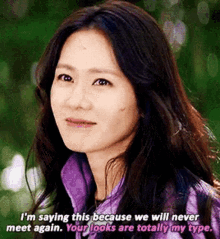What is the Mean Girl? For me, I imagine the Mean Girl as the It-Girl or Queen Bee.
She is often the ruthless ruler of a school setting in film, TV, and literature. During the 80s, a boom in stereotypes was apparent in film.
The Breakfast Club is a prime example, and the rippling effects of this era’s obsession with boxing characters into a specific stereotype are still felt in media today.
The Mean Girl trope has developed and somewhat shook off some of its original negativity: modern ‘mean girls' often manage to win over the hearts and minds of audiences even with a dark, selfish streak, due to their multifaceted characters (in some cases).
I'll preface the bulk of this article by mentioning that the ‘mean girl’ trope can be problematic- so much media includes this trope; and the idea that young girls should be pitted against each other in a hostile environment.
But I believe that, if the mean girl is done well, we can see positive effects from it. For example, in Heathers (1989) we see the damaging consequences of this hyper competitive and ruthless nature- societal pressures and mean spirited social hierarchies leads to a literal explosion.
Similarly, (but less murderously) in Mean Girls (2004) the audience is warned against the consequences of being a contrived backstabber- being a mean girl often has more downsides than perks.
So, lets get into this iconic archetype:
I can't talk about the Mean Girl trope without first mentioning Heathers, the 1989 cult classic that simultaneously became the blueprint for the archetype and defied the somewhat sexist expectations for teenage girls.
Heathers showed the consequences, not just of mean girl’s actions themselves, but of societal misunderstandings of teens and angst, while poking fun at the characters and the subject-matter with hilarious self-awareness. If you haven’t seen it already, watch the original Heathers- it’s the draft for the modern Mean Girl.
.
Let us slide into your dms 🥰
Get notified of top trending articles like this one every week! (we won't spam you)Why is the ‘Mean Girl’ so successful?
I think the answer is blisteringly simple- it's entertaining. Watching drama unfold, scandal and plain bad attitude is compelling to audiences.
We love to see friends turn to enemies and mean girls holding dominion over a horde of admirers, simply because we are able to watch in awe of that power without being affected by it directly.
Sometimes the ‘mean girl’ isn’t that mean at all- Cheryl Blossom loses most of her trademark blunt, scathing comments after a few seasons of Riverdale. It is clear that she is a character with fundamentally good morals- she cares deeply for her friends and somewhat shakes off her bully persona.
I've seen Cher Horowitz included in countless ‘best mean girls of all time’ articles and videos, but in reality she’s a sweet character with good intentions.
Regina George, the leader of the Plastics herself, has a forgiving and compassionate side. Even the most vindictive, cutthroat mean girls can showcase top tier leadership skills; it makes for both an engaging antagonist and a believable teenage dictator.
So what qualities make a fan favorite of this archetype?
Katherine Pierce is a slightly less traditional mean girl, but I’d say she bears all the attributes of a successful member of the archetype. After all, her character is a firm favorite of long time Vampire Diaries fans. She’s cunning, gorgeous and funny enough to literally get away with murder.
Rizzo from Greece might not have been very convincing as a teenager, but she sold the mean girl role with a vulnerable side so well that her character is reused every Halloween as an easily identifiable costume.
Other famous mean girls include; Sharpay Evans (High School Musical), Big Red (Bring It On) and the Original Mean Girl- Heather Chandler herself, and Veronica Sawyer, who steps in to fill her shoes after her tragic death.
Mean girls are sassy, sharp and ambitious. All the best mean girls have a motive- the less memorable ones simply fade into the background because they’re photocopies of the same, overdone trope that has the potential to be both formidable and lovable.
Take the Quiz: Which Indian city is the perfect holiday spot for you!?
Let's match you with an Indian city that you would love!
Mean Girls That Didn't Hit The Mark
Marissa (F the Prom), the OMG’s (The Kissing Booth) and Kimmy Stitcher (Tall Girl) are all prime examples of fairly forgettable, under developed ‘mean girls’ used either as a joke (ill timed and often not quite living up to the perfect level of mockery ‘Heathers’ and ‘Mean
Girls’ excelled at) or a side character so black-and-white it detracts from the main plot- simply because they are so disastrously poorly built as rounded characters.
Stella is the mean girl of Netflix’s recent Winx club adaptation- she is as stereotypical as they come, which isn’t always a bad thing. There are some examples of the mean girl trope being such a cliché that it feels almost like a parody, or ironically poking fun at teen angst or common stereotypes.
Heather Chandler was such a successful mean girl that she acts as the blueprint for most mean girl characters today- she is the stereotype, and yet somehow simultaneously manages to flawlessly defy the stereotype- with witty dialogue and clearly possessing a huge amount of intelligence.
Where I think Stella first went wrong is in her arc- or lack of one. Stella is mean. She’s rude. She makes comments to likable characters that aren’t particularly witty or funny, but make you genuinely feel pity for the poor girls that claim to be her friends.
This makes sense, if Stella is purely to be a ‘bully’ character with little redemption. But she is set out, from the first moment you see her, to be the mean girl, the girl that clashes with the protagonist over the love interest, Sky.
Stella’s genuine nastiness makes her sudden redemption and change of heart stranger than It could’ve been if she had just shown some glimmer of yearning for friendship before, in some other way than asking for pity due to her tragic backstory. Stella’s odd character actually does become more likable, but in a whiplash-feel-sorry-for-me sort of way, instead of a gradual change of heart. It makes her relationships with the other characters feel forced and less genuine.
That being said, I think a second season of Fate; The Winx Saga could actually give her character more time to blossom- and maybe we'll get a bit of that residual manipulative streak shining through even amidst her new friendships.
The Making Of A Mean Girl
Here are a few criteria that I think make Mean Girls more rounded and interesting characters:
A Motive To The Meanness
While having a bitchy teen being mean for the sake of it is always interesting, it doesn’t make for a rounded character. I love when a mean girl has a motive, or at least ambition and drive to somewhat compensate for their attitude.
Heather Chandler's reason for being a horrible person was keeping her dictator-like grip over Westerburg High. Sharpay Evans was determined to climb to the top not only of a social hierarchy, but of Broadway too. Regina George was somewhat addicted to the power being the most influential, popular, tyrant-ruler teenager at North Shore High, as did Allison Dilaurentis in PLL.
Some Level Of Intelligence
I think mean girls should be intelligent. The idea that some girls at the top of the social hierarchy, ruling the school are some bubble headed blondes with two brain cells bouncing together is outdated, and, frankly, annoying (although Karen gets away with it-shes clueless and not really mean spirited- just confused).
Thankfully, that particular trope is a dying breed. Mean Girls should be smart enough to be conniving, to dish out those scathing quips. Not to say every mean girl is a villainess- as I said before, many ‘mean girls’ aren’t all that mean to begin with.
Think Santana from Glee- she’s well-meaning, but blunt. She’s funny, rude and a little conniving. She knows exactly what to say to get a reaction, but these social smarts also mean that she’s likable.
The Signature Look
How a character’s individual style is projected is incredibly notable in so many classic ‘mean girl’ films and TV shows.
For example, in Mean girls, we see Cady’s style evolution. Her transition from frumpy clothes to fashionable outfits mirrors her transition to her newfound clique the ‘Plastics’. Her clothing reflects her journey to becoming a copy-and-paste version of Regina George. Janis, the anti-plastic herself, also uses her presentation to project her own personality.
Janis' style and beliefs scorn the hyper-feminine Plastics- she is a representation of the ‘not like other girls' mentality that was so prevalent in literature and media in the early 2000's. Janis' darker clothing and judgement of all things ‘girly’ appeared to make her exempt from being a ‘mean girl’.
But this only makes her more like a plastic herself- Janis exhibited such strong hatred of Regina that she both feared and looked down upon typically feminine interests and appearance.
Desirability
The mean girl is a character other characters love to hate. She’s beautiful, and authoritarian. She’s capable and doesn’t take crap from anyone.
Most audience members can't help but feel a little in awe of their commanding presence; at least, when the mean girl is done right. The girls want to be her- and the boys want to be with her- the Mean Girl should be hated, coveted, and demand your attention.
When the Mean Girl meets her downfall (usually) at the end of the film, that sparkle dims just a little, but the mean girl’s legacy inevitably lives on in the audiences’ mind.

















